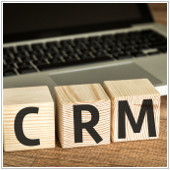 When you have several cost-effective options like cloud computing and managed services providers, IT spending should never get out of control. And if you want to cut back even further, trade in your expensive desktops for thin and zero clients.
When you have several cost-effective options like cloud computing and managed services providers, IT spending should never get out of control. And if you want to cut back even further, trade in your expensive desktops for thin and zero clients.
What are thin and zero clients?
Thin clients are stripped-down computers with minimum processing power and memory. They rely on a basic operating system and a network connection to access a more powerful system where almost all computing processes take place.
Zero clients work the same way. The only difference is that there’s no local storage or operating system installed on the device; all the software, storage, and processing power sits on a server until you need it. This setup makes it ideal for cutting costs, and here’s why.
Reduced hardware costs
When it comes to upfront costs, thin and zero clients are the obvious choice. Conventional desktops start at $300 per user, while thin clients can go for as low as $90 per user. And since they have no hard drive or other moving parts, lean devices tend to be more durable and have a longer lifespan than their traditional counterparts.
Simplified IT management
Another benefit of thin clients is that they can be managed from a server. Suppose a new software update was released. Instead of manually downloading the patch on each computer, you can simply install the update on your server and roll it out to all thin clients. Apart from upgrades, you can make backups, security configurations, and application deployments in the data center. This quickens setup, reduces downtime, and increases employee productivity.
Minimized security risks
Thin clients also help you avoid costly malware attacks and data breach incidents. Your employees and poorly managed endpoints are the biggest vulnerabilities with traditional desktops. Thin and zero clients reduce these problems by limiting direct access to the operating system. This prevents employees from copying sensitive data to removable media and installing software, malicious or otherwise.
If your thin client is damaged or corrupted, you don’t have to worry about your data, as it’s originally stored in an impenetrable server.
Decreased energy consumption
Because processing is done locally, traditional desktops generate a lot of heat and require more power, which results in huge power and cooling bills at the end of the month. By contrast, thin and zero clients consume only 4-6.5 watts of power, almost 1/50th of thick client requirements. What’s more, they require little to no cooling, allowing you to enjoy significant cost savings.
When looking for cost-cutting solutions, thin and zero clients should never be overlooked. The reduced hardware costs, power bills, and security risks are just too good to pass up. But if you’re still unsure about this technology, give us a call. We’ll assess your tech needs and determine whether or not thin or zero clients can help you succeed.


 The ocean has a strange way of making you feel so small; so does a Twitter account with virtually no followers. It does become quite hard for your small- to medium-sized business to establish a strong online presence when they are surrounded by singers and supermodels with their own collection of trending hashtags. This is the part where you’d wish you had come across a genie lamp; while waiting for that to happen, take Twitter’s new dashboard app out for a spin.
The ocean has a strange way of making you feel so small; so does a Twitter account with virtually no followers. It does become quite hard for your small- to medium-sized business to establish a strong online presence when they are surrounded by singers and supermodels with their own collection of trending hashtags. This is the part where you’d wish you had come across a genie lamp; while waiting for that to happen, take Twitter’s new dashboard app out for a spin.
 As the saying goes, “absence makes the heart grow fonder.” If oceans were to separate you from your loved ones, what would you do? Would you communicate as much as you used to? Would you still check in from time to time? Now, apply this sentiment to your business; what would happen if communication with your customers broke down? Following up on orders or keeping track with progress would become a nightmare – it’s time for CRM software to save the day:
As the saying goes, “absence makes the heart grow fonder.” If oceans were to separate you from your loved ones, what would you do? Would you communicate as much as you used to? Would you still check in from time to time? Now, apply this sentiment to your business; what would happen if communication with your customers broke down? Following up on orders or keeping track with progress would become a nightmare – it’s time for CRM software to save the day: Like the Loch Ness Monster, reputation marketing has long been considered a figure that is shrouded in mystery. Shai Aharony from Redboot Online sums it up as “tools that allow you to analyze, track, monitor and engage online activity, giving you the power to directly respond to customer complaints and turn potentially damaging feedback into a positive experience.” If you are still unsure, take a look at these 10 tools that provide a better theoretical as well as practical understanding:
Like the Loch Ness Monster, reputation marketing has long been considered a figure that is shrouded in mystery. Shai Aharony from Redboot Online sums it up as “tools that allow you to analyze, track, monitor and engage online activity, giving you the power to directly respond to customer complaints and turn potentially damaging feedback into a positive experience.” If you are still unsure, take a look at these 10 tools that provide a better theoretical as well as practical understanding: You know social media marketing can be valuable for your business but, simply put, you just don’t have the time for it. And besides, you’re no social media expert, so the whole process itself can be unnecessarily long as you try and figure out what’s most effective. But what if there was a way you could spend less time on social media while producing more results. Sounds good, right? These 10 tools may be able to help you do just that.
You know social media marketing can be valuable for your business but, simply put, you just don’t have the time for it. And besides, you’re no social media expert, so the whole process itself can be unnecessarily long as you try and figure out what’s most effective. But what if there was a way you could spend less time on social media while producing more results. Sounds good, right? These 10 tools may be able to help you do just that.